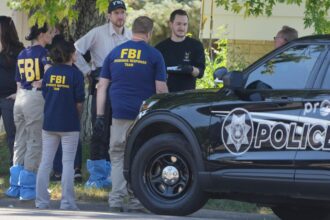Most lung cancer screening guidelines hinge on how much people smoked tobacco and when they last smoked, but the American Cancer Society now says it doesn’t matter how long ago they quit. On Wednesday, the ACS released guidance recommending that anyone with a significant smoking history get an annual low-dose CT scan for lung cancer.
The new guidelines also expand the age range for lung cancer screening to 50 through 80, instead of 55 through 74, and lower the smoking history requirement from 30 cigarette pack years to 20 pack years or more. That means the equivalent of a pack a day for 20 years, which includes two packs a day for 10 years or four packs a day for five years. Most private insurance plans are required to cover screening guidelines with an A or B grade recommendation from the U.S. Preventive Services Task Force, though some organizations do follow ACS guidelines.
These recommendations bring the ACS’ new age range and smoking history requirements in line with that of the task force’s lung cancer guidelines, which were updated in 2021. However, the task force still only extends lung cancer screening eligibility to patients who quit smoking within the last 15 years.
One of the main reasons the ACS wanted to strike the years-since-quit requirement from their guidelines was that many former smokers are still at a high risk for lung cancer regardless of when they quit smoking. “The more we dug into the data, the more we saw there was no real evidence for that criterion,” said Robert Smith, the senior vice president of early detection science at the American Cancer Society.
Even while smoking’s contribution to lung cancer risk declines the further a patient is from their last cigarette, people still continue to get older — and risk of all cancers, including lung, accumulates with age. Plus, any former smoker’s risk of lung cancer will still be higher than the average never-smoker, and that doesn’t go away at the end of 15 years. The ACS also published a systematic review of the evidence for dropping the 15-year limit on Wednesday.
“It was clear that, in our original guidelines, we were disqualifying people from continuing screening when they would still have substantial risk,” Smith said. “I believe the message has been that your risk steadily declines until it’s no longer serious, and that just turns out to be not true.”
Removing the years-since-quit requirement should help more people who are at high risk of lung cancer get screening, said Kim Sandler, a cardiothoracic radiologist at Vanderbilt University who did not work on the ACS guidelines. “We are still missing a significant number of lung cancers, meaning people were not eligible by the time of diagnosis,” Sandler pointed out, referencing a study that estimated 35% of people diagnosed with lung cancer were deemed ineligible for screening under the current USPSTF guidelines. “A significant number of people were excluded because they quit more than 15 years ago.”
The former guidelines also disproportionately excluded women, Hispanics, Asians, and African Americans, experts said. That’s because for the same amount of smoking history, these groups seem to have a higher risk of lung cancer compared to white men. In one study of smokers, researchers found that 45.3% of Black individuals smoked less than 30 pack years while only 16.1% of white individuals did. Yet Black people were still more likely to be diagnosed with lung cancer under age 55.
Expanding the guidelines might help discover more early-stage lung tumors, when treatment has a much higher likelihood of success. Lung cancer is the leading cause of cancer death for both men and women, and results in more death than breast and ovarian cancer combined. Screening, particularly targeted toward those who have higher risk from smoking or other risk factors, might help reduce that burden, Sandler said.
That’s if patients are able to use the intervention in the first place. Some estimates suggest that fewer than 6% of eligible patients actually get lung cancer screening.
Recommendations like those from the American Cancer Society are also only a rough filter for who should be screened, Sandler added. Guidance only exists for smokers and former smokers, but many things can contribute to lung cancer risk including occupational exposures, air pollution, and family history. That means researchers and clinicians still have a long way to go in improving the recommendations, which can determine insurance coverage for the procedures, and making them more personalized, Sandler said.
“Just getting rid of the 15 years is a great step in the right direction,” she said. “We just need to continue to do the research and try to better define what high risk really is.”









